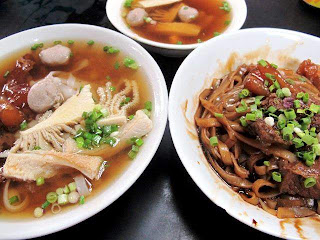proudly a part of #Saysomethingnice
image credit: Veronica Ng
Satay,
those little skewers of grilled meat served with peanut sauce and accompanied
with ketupat (Malay rice cake), cucumber and onion slices is a very popular
dish in Malaysia.
Satay may consist of diced chicken, mutton, beef, lamb, fish,
rabbit or even ostrich grilled or barbecued over a wood or charcoal fire.
Walk
down any street in the country and the mouthwatering aroma of satay exudes from
practically every corner you pass: roadside satay stalls, hawker centers, pasar
malam (night markets), kopitiam (Chinese coffee shops), and even high-end
restaurants.
Satay
is universally loved across Southeast Asia. It’s commonly believed that satay
is the region’s distant cousin to the Middle-Eastern kebabs, thanks to the
spice route and the culinary influence of the early Arab traders.
Its
close cousins are yakitori from Japan, shish kebab from Turkey, shashlik from
Caucasus, chuanr from China, and sosatie from South Africa. Satay is listed at
number 14 on The World's 50 most delicious food readers' poll complied by CNN
Go in 2011.
Each
country of course has their own interpretation of satay, influenced by their
own unique food culture and distinct palate. For instance, Indonesian satay
tend to be sweeter because of kecap manis (sweet soy sauce) while the Thai
satay is slightly less sweet since coconut milk is used instead.
Our
very own satay is made with ingredients and spices commonly found in Malaysian
cooking; shallots, lemongrass, kunyit (turmeric powder), and coriander powder.
The basic recipe calls for the cook’s meat of choice to marinate for many hours
or even overnight so as to lock in the flavor.
There
are a number of well-known satay outlets in Kajang, Selangor which is dubbed
the Satay City of the country. Satay Kajang has become a generic name for a
style of satay where the meat chunks are bigger than normal, and the sweet
peanut sauce served along with a portion of fried chilli paste.
Given
its popularity, satay Kajang is now found throughout Malaysia. Stalls and
restaurants around Kajang offer not only the more traditional chicken or beef
satay, but also more exotic meat such as venison, rabbit or fish, as well as
gizzard, liver, and a number of other variations.
Another
version of satay is the satay lok-lok from Penang and sate celup (dipped satay)
from Malacca. Both are Malaysian Chinese fusions of the hotpot and the Malay
satay.
Pieces
of raw meat, tofu, century eggs, quail eggs, fish cake, offal or vegetables are
skewered on bamboo sticks. These are cooked by the customers themselves by being
dipped in boiling water or soup stock. The satay is then eaten with a sweet,
dark sauce, sometimes with chilli sauce as an accompaniment.
There
are usually no tables or chairs near street vendors, so customers tend to
gather around the mobile food van.
If
the satay is eaten with satay sauce, it is called sate lok-lok. If the satay is
cooked with boiling satay peanut sauce, it is called sate celup. Both dishes
are available from street vendors or in restaurants, and the majority are non-halal.
Labels: #eatsomethingnice, #saysomethingnice, lok lok, satay, satay celup, satay kajang























